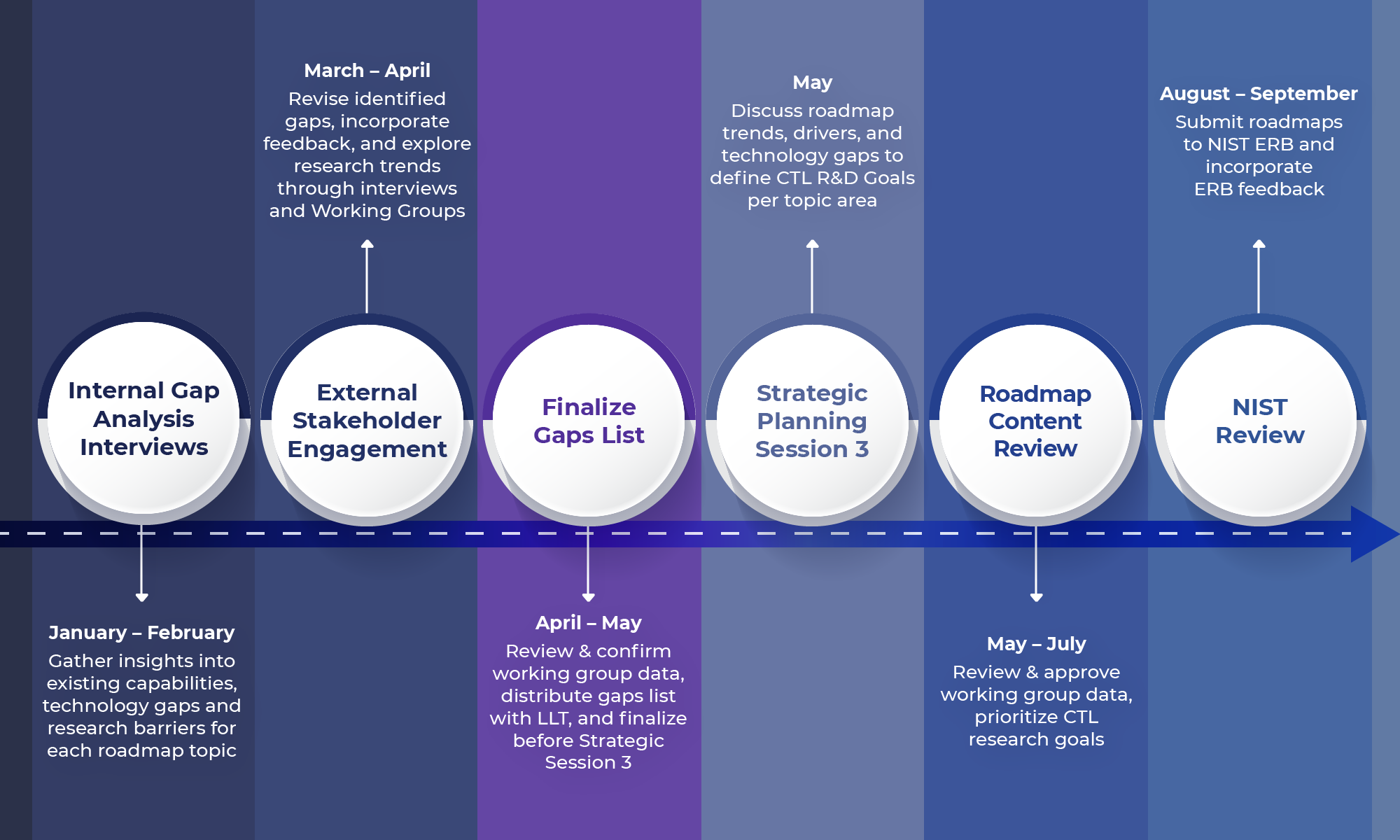The National Institute of Standards and Technology (NIST) Communications Technology Laboratory (CTL) quantum communications research focuses on three areas: Sensing, Computing and Networking. These focus areas serve as the foundation for development and innovation across a wide range of technical applications, making NIST’s research essential for growth in numerous sectors. This work contributes to NIST’s Quantum Information Science (QIS) initiative by developing innovative quantum communications components and techniques that enable secure, high-speed data transmission and foster future quantum networks.
Quantum Communications Focus Areas
Quantum Communications Roadmap
Overview
CTL is advancing Quantum Communications research to support secure, high-performance data transmission using quantum principles by developing a Quantum Communications roadmap. This roadmap identifies key research gaps, technological barriers, and metrology needs in quantum networking, including quantum key distribution, quantum-state teleportation, and low-loss optical fiber transmission. By fostering collaboration with industry, government, and academia, CTL aims to drive innovation in quantum communications, ensuring the development of robust measurement standards and interoperability frameworks for future quantum networks.
Quantum Communications Definition
Quantum Communications technology leverages the unique properties of photons and subatomic particles, allowing qubits to exist in superposition and entangled states, and to develop large-scale, powerful and secure quantum systems. At its core, quantum communications research seeks to harness the power of quantum phenomena, leading to advancements in ultra-fast computing, highly accurate sensors, and ultra-secure communication networks. The National Institute of Standards and Technology (NIST) Communications Technology Laboratory (CTL) conducts cutting-edge quantum communications research in sensing, computing, and networking.
In quantum metrology, CTL leverages quantum properties and novel approaches to achieve unprecedented measurement precision, tools to advance scalable quantum systems, and foundational technologies to enable large-scale quantum networks. Projects like the Quantum Voltage Standards enhance calibration accuracy in RF voltage and power measurements, while Rydberg Atom-Based Field Probes enable SI-traceable electric field measurements, revolutionizing telecommunications and defense systems. In quantum computing, CTL advances scalable quantum systems with tools for qubit to mega-qubit scaling, cryogenic radio frequency calibration, and the integration of superconducting circuits. Projects like the Flux Quantum Electronics Project and Mega-Qubit Innovations tackle challenges in controlling and measuring millions of qubits, paving the way for larger, more reliable quantum computers. In quantum networking, CTL develops technologies for entanglement distribution, optical time transfer, and remote microwave entanglement, facilitating secure, large-scale quantum communication networks. Through groundbreaking research in quantum sensing, computing, and networking, NIST CTL ensures U.S. leadership in quantum technology, advancing secure communications, precision metrology, and scalable quantum systems.
Quantum Communications Roadmap Timeline

Stakeholder Engagement
During the roadmapping process, CTL engaged external stakeholders in the industry sector through a working group to provide feedback on Quantum Communications gaps to ensure a comprehensive and robust approach to defining CTL goals. Stakeholders with a wide range of expertise including classical and quantum networking, quantum physics, quantum communications, quantum sources, memory, and polarization compensation, and optical networking, gathered to identify additional gaps, prioritize gaps according to industry need, and discuss technology trends and innovative opportunities for research.
Gaps and Themes
Each roadmap report will identify a list of clear, actionable technology gaps that must be addressed to realize the expected future state of the selected roadmap topic area. Interviews with CTL staff, feedback from stakeholders, and a review of relevant literature will inform this assessment. This will establish a baseline of existing capabilities, highlight measurement or technology gaps, and pinpoint the barriers to supporting industry standards and advancements. This section describes priority research needs specific to Quantum Communications to inform the development of CTL-specific R&D goals that address a subset of the identified gaps.







